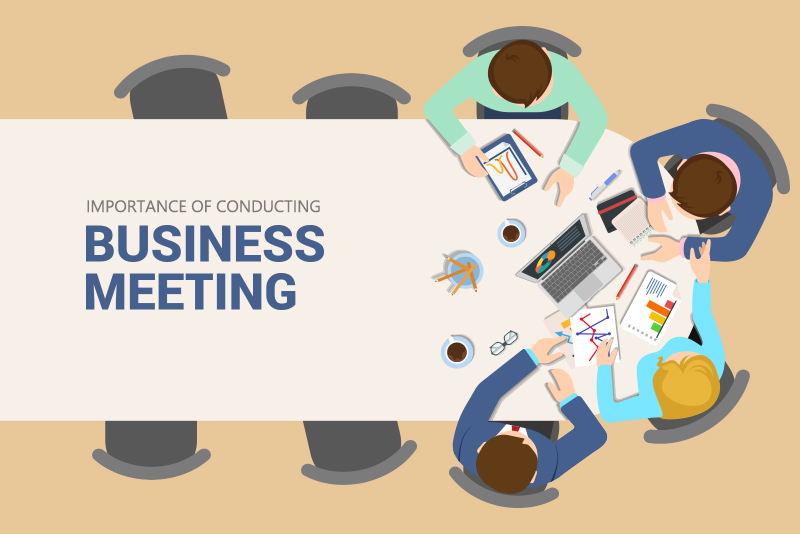Meetings serve as a platform for idea-sharing, decision-making, and collaboration in the modern workplace. An effective meeting is essential for any organization that wants to maintain clear communication and maximize productivity. A business transcription company can transcribe the audio/video recordings of meetings into text, ensuring that all discussions, decisions, and ideas are accurately captured and documented for future reference.
Over the years, the dynamics of conducting meetings have evolved significantly. Nowadays, virtual meetings spanning different time zones have become commonplace, while in-person interactions have diminished. However, in order to unlock their maximum potential, meetings must embrace inclusivity. An inclusive meeting goes beyond traditional boundaries and focuses on establishing an environment where each member of the team feels empowered and self-assured in contributing actively. Organizing a meeting that fosters such a sense of active participation among all participants is a daunting task that necessitates careful consideration and thorough preparation.
Why Inclusive Meetings Matter
In today’s rapidly evolving world, fostering collaboration and embracing diversity has become more important than ever. Business leaders must recognize that meetings are much more than a gathering of individuals and actively promote collaboration in the sessions. During an ideal meeting, every participant actively engages by offering their unique perspectives that are not only heard but valued.
However, in many instances, meetings fall short of their potential due to a lack of inclusivity. Studies have shown that many people (women, remote workers, etc.) have difficulty being heard and contributing in meeting settings. According to a study conducted by Harvard Business Review, only 35% of employees surveyed felt consistently comfortable contributing during meetings. In the case of meetings involving five to ten individuals, this translates to only two to three individuals feeling empowered to actively participate. Additionally, studies found that though women do express their opinions, they are far more likely to be interrupted in meetings, and even have their ideas taken less seriously by teammates.
From collaboratively generating fresh insights to breaking down barriers to building stronger teams, embracing inclusivity in meetings come with many benefits for both individuals and organizations:
- Allows showcasing of diverse perspectives and ideas, leading to more creative and innovative solutions
- Different perspectives spark creativity and encourage outside-the-box thinking, ultimately leading to better outcomes
- Ensures that all voices are heard, regardless of background, race, gender, or any other differentiating element
- Promotes a sense of belonging and create an environment where everyone feels valued and respected.
Taking proactive steps to encourage inclusivity in meetings will help business leaders harness the complete potential of teams, and make employees feel their voices are heard and valued.
How to Promote Inclusion and Diversity in Meetings
Conducting inclusive meetings requires intentional effort. Here are 10 strategies for promoting diversity and inclusion in your meetings:
- Provide training and resources to help team members develop communication and collaboration skills.
- Set the stage for inclusion before your meeting even begins. Focus on making people feel comfortable. A HBR article recommends a simple strategy: sending a pre-meeting email to attendees and inviting people to come “ready to share as well as listen.”
- Create a welcoming environment. Set the tone for inclusivity when people enter the meeting room. Welcome them by name and make sure everyone is properly seated.
- Set the tone for inclusivity at the outset. Let people know they can speak openly and that they can express their opinions and ideas freely.
- Encourage active listening, empathy, and respect. Set ground rules for participation and ensure that all team members follow to them. If there are remote attendees, it is important to consistently remind those in the physical room to actively include them and pay attention to any hand-raise feature.
- Create opportunities for brainstorming and idea-sharing, ensuring that all voices are heard and considered.
- Make an effort to actively seek out diverse perspectives and ensure that all team members have equal opportunities to contribute. Don’t allow dominant voices to control the conversation.
- Start with a brief round robin activity that ensures active participation by all attendees and facilitates better mutual understanding. By employing the round robin approach, no single individual can monopolize the discussion, fostering equal engagement and involvement among participants.
- Establish explicit ground rules at the beginning of the meeting and stick to them consistently. Formalizing inclusive meeting conduct serves as a clear notice to potential offenders and ensures that all participants are aware of their rights and responsibilities.
- Step in when strong personalities over-reach. If someone tries to dominate the dialogue, intervene and guide the conversation back to the larger group, ensuring a balanced and inclusive discussion.
Meetings remain a primary platform for cultivating and nurturing a fully inclusive culture that actively involves and empowers individuals to perform at their utmost potential in the workplace. By transcribing meetings, organizations can enhance communication, foster transparency, support compliance requirements, and facilitate knowledge sharing, ultimately improving productivity and driving better outcomes. Partnering with an experienced provider of meeting transcription services is the best option to ensure accurate documentation of fast-paced discussions with multiple participants. Experts can provide an accurate and reliable documentation so that participants can review and recall details, preventing misinterpretation. Transcripts also promote inclusivity by make meeting content accessible to individuals with hearing impairments or language barriers, allowing them to fully engage and participate in the meeting’s outcomes.
Struggling to capture and retain crucial meeting information? We can help!




